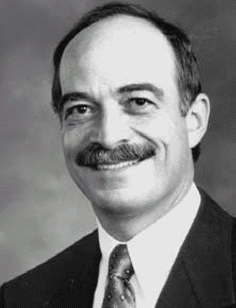The take-home message for otolaryngologists is to incorporate new knowledge but continue to get a good history, an appropriate physical exam, and a determination of the likelihood of chronic rhinosinusitis, Dr. Bhattacharyya said. While he was not a member of the consensus panel, he has written several articles on the symptoms of chronic rhinosinusitis.
Explore This Issue
June 2006Drs. Setzen and Bhattacharyya agree that when a patient has symptoms that suggest a sinus related headache, the otolaryngologist should routinely do a nasal endoscopy. Even if an ENT doctor thinks the headache may be migraine, he or she should do the endoscopy to rule out sinus blockage, Dr. Bhattacharyya recommended. If blockage is detected on this test and the patient has major symptoms of rhinosinusitis such as facial pain, congestion, nasal obstruction, and headache, a CT scan is warranted, said Drs. Bhattacharyya and Setzen.
Different Diagnostic Paths
Dr. Bhattacharyya said that the controversy over headache diagnosis among treating physicians stems from a vastly different perspective on the term headache. The term is overused and too far-reaching. The symptoms of facial pain and headache are common in the general public. What the neurologist and the otolaryngologist consider a headache is vastly different, he explained.
In the recent article, Dr. Setzen and his co-authors wrote, The otolaryngologist, using the American Academy of Otolaryngology-Head and Neck Surgery (AAO-HNS) classification system, investigates headache as one of several symptoms and signs to diagnose a pathophysiologic condition. The neurologist or headache specialist, in contrast, comes from the opposite viewpoint, searching for a pathophysiologic condition to explain a symptom, headache.
Asignificant proportion of what we now think of as sinus headaches are indeed migraine headaches. – Michael Setzen, MD
Otolaryngologists try to define the sinus condition and the neurologists want to determine the cause of the headache, summed up Dr. Setzen. Another co-author on the consensus paper, Howard L. Levine, MD, contends that rhinosinusitis is not a sinus headache. Dr. Levine, who is an otolaryngologist and Director of the Cleveland Nasal-Sinus and Sleep Center in Cleveland, Ohio, said the overlap in symptoms of sinus and migraine headache, as well as physiological problems such as a deviated septum and the lack of clinical practice guidelines, lead many otolaryngologists to misdiagnosis.
Testing Can Confirm Diagnosis
The article outlines the two current guidelines, from AAO-HNS and the International Headache Society (HIS), for diagnosing headache and the limitations of these guidelines. Drs. Setzen and Levine noted that the definitive diagnosis for rhinosinusitis can be made by CT scan but that many physicians are not able to perform this test. As noted in the AAO-HNS guidelines, they write, the majority of symptomatic patients will be treated by primary care physicians who may lack the equipment and training necessary to perform these tests, and thus recognize that a routine diagnosis of rhinosinusitis can generally be made through history and physical examination, including anterior rhinoscopy and oropharyngeal neck examination.

Leave a Reply